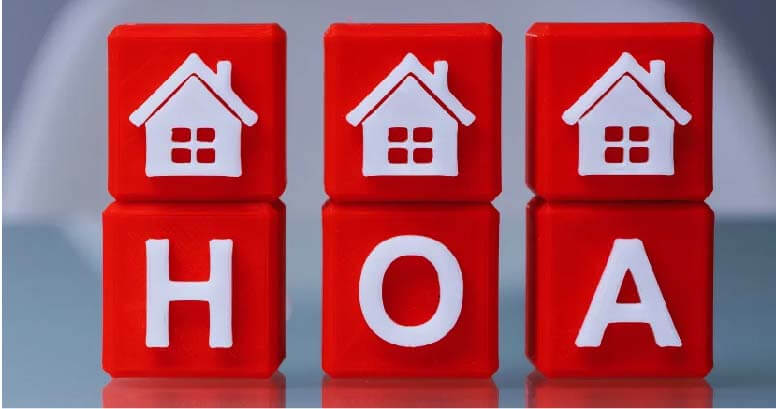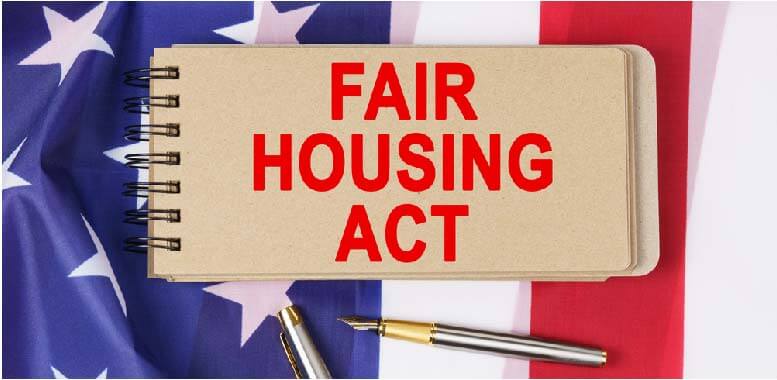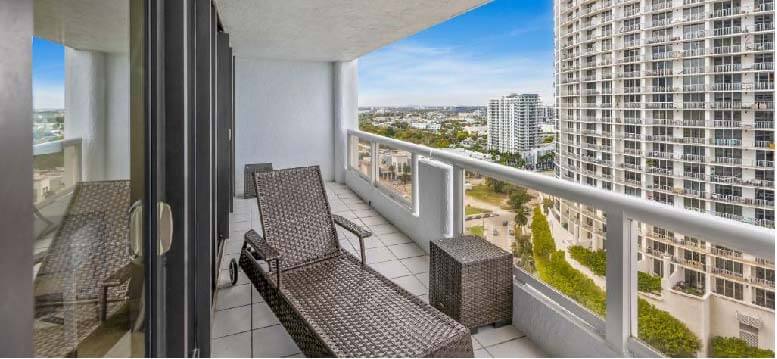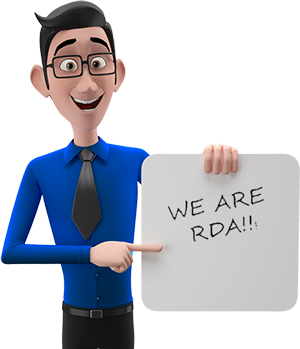HOA Board Members: Fostering Positive Relationships
HOA board members can greatly influence the community dynamics within a homeowners association, but managing challenging personalities is often part of the role. Navigating the complexities of working with difficult board members can impact overall community satisfaction, making it essential to address these relationships constructively. Understanding the different personality types and behaviors of HOA board members—from the absentee participant to the aggressive or vocal member—offers insight into fostering a more harmonious environment.
This article explores practical approaches for building positive relationships with challenging HOA board members. By setting clear expectations, employing effective communication techniques, and creating an inclusive atmosphere, HOA boards can turn contentious interactions into productive collaborations that benefit the entire community.
Identify Types of Difficult HOA Board Members
Homeowners associations (HOAs) rely on the hard work and cooperation of a volunteer board of directors. However, not all board members may contribute positively to the association’s mission. Some common types of difficult board members include those with poor attendance habits, unprofessional or aggressive attitudes, a refusal to take responsibility, and those who consistently prioritize personal interests over the community’s.
In dealing with such members, it’s vital to recognize these behaviors early on to prevent disruptions in the association’s governance and to maintain a healthy community atmosphere. Here are a few challenging types that you might encounter:
The Absentee Board Member
The effectiveness of any homeowners association board relies heavily on the consistent presence of its members. An absentee board member who regularly misses meetings or arrives late can be a significant challenge, as their lack of engagement could be due to a variety of reasons, such as disinterest or personal commitments. This issue also risks the board’s ability to make quorum, which is necessary for vital decision-making processes. It is important for the community association to address absenteeism empathetically but firmly, checking if alternative meeting arrangements or schedules could accommodate these members better.
The Bully Board Member
Bullying behavior on the HOA board is a serious concern that can derail the aim of community-focused decision-making. The Bully board member may attempt to impose their will on others, using tactics such as manipulation, guilt, and even misinformation. Other members may feel intimidated and refrain from voicing their ideas, fearing the hostile reactions of the bully. This can ultimately lead to poor decisions that favor the bully’s agenda rather than the community’s needs. Dealing with such a member requires a calm and methodical approach centered on facts and communal statutes to counteract intimidation.
The Complainer Board Member
A board member who is consistently negative can affect the mood and productivity of the HOA board. This type of member, known as The Complainer, dwells on the negative aspects and finds faults in decisions and other board members, which can create a bleak atmosphere. Addressing these concerns without allowing them to dominate the discourse is key to maintaining constructive meetings. Acknowledging the issues raised by the complainer and then steering the conversation towards positive and solution-based discussions is an effective strategy for managing this type of difficult board member.
It is pertinent that these various difficult personalities are managed properly to ensure that the board of directors can maintain a united front, particularly when facing the community association manager or association management company. Effective governance depends on the ability to deal with members exhibiting a sour disposition or showing signs of board members’ harassment, thus ensuring that the board fulfills its roles without succumbing to unnecessary internal friction.
Understand Their Behaviors
Difficult HOA board members can significantly disrupt the orderly conduct of meetings by dominating the conversations and steering the discussions away from important agenda items. This behavior can hinder a board’s ability to reach consensus and make constructive decisions, ultimately impacting the homeowners association’s ability to fulfill its duty to the community. Moreover, toxic board members may create distractions and personal conflicts, which further impede the board’s decision-making process and its fiduciary responsibilities to community members.
Self-dealing is another troubling behavior, where board members exploit their positions for personal gain. This can manifest as financial embezzlement or other actions that breach their fiduciary responsibilities, drastically undermining the trust of the community. Additionally, emotional tensions within an HOA can escalate, leading to harassment or disruptive behavior. Such conflicts can pose significant challenges to the governance of the board and the community’s collective objectives. Having well-defined bylaws that address harassment can aid in better communication and systematic, effective responses to such behaviors.
Common Traits of Difficult Members
Difficult members on the HOA board are often characterized by behaviors that interrupt the flow of meetings and focus. These individuals may monopolize conversations, thereby derailing meetings from the strict agenda that was set. Hostile behaviors from such members can frustrate and discourage other members from participating, which can lead to a static decision-making process.
Some of these board members may indulge in self-serving practices, neglecting their fiduciary duties and negatively impacting the financial and social well-being of the community. The presence of such individuals creates an atmosphere filled with mistrust and can severely hinder effective governance. In cases where all efforts to correct this behavior fail, it may become necessary for the board to formally request the resignation of the problematic member.
Motivations Behind Negative Behaviors
Often, the negative behaviors exhibited by HOA board members can be traced back to personal motives such as ego or self-interest. These motivations disrupt the community decision-making process and can lead to a lack of cooperation, fostering conflict and damaging relationships within the community. A toxic board member might consistently prioritize their own agenda over the community’s, causing friction and a breakdown in collaboration.
Disrespectful conduct by board members—whether it’s bullying, harassment, or undermining others—contributes to a tumultuous environment that detracts from the structured governance necessary for an HOA to function effectively. Harassment, whether through verbal threats or cyberbullying, is often the result of frustration or dissatisfaction with board decisions, reflecting more profound issues within community dynamics. Identifying the unique motivators behind each instance of harassment, influenced by a range of personal experiences and community interactions, is crucial in addressing and resolving these behaviors.
Develop Effective Communication Strategies
When dealing with a disgruntled HOA board member, developing effective communication strategies is vital to fostering a more constructive board dynamic. Begin by approaching conversations with board members privately to create a space of trust and respect. Addressing concerns in a one-on-one setting can prevent the spread of negativity and keep tensions from boiling over into the larger HOA community.
It’s essential to maintain a tone that assumes good intentions and to use neutral language that minimizes defensiveness. Charged language or accusations can exacerbate conflict, making it more challenging to reach a resolution. Documentation is also key; keeping records of conversations and meeting summaries ensures that professional standards are mutually understood and that there is clarity around expectations and agreements.
Acknowledging resident frustrations, even on platforms like social media, shows attentiveness and a willingness to address issues, which can improve community manager-resident relations. Directly engaging difficult board members and seeking to understand their viewpoints can provide critical insight into their motivations, which could affect how they interact within board meetings or community decisions. Taking the time to really listen to what they’re advocating for, and why, could reveal the path to consensus and constructive engagement.
Active Listening Techniques
Active listening is a powerful technique for addressing the influence of a board member who may dominate the conversation. It involves more than just hearing the words spoken; it means validating a member’s point and concerns before steering them towards other topics or viewpoints. Encouraging equal participation from all board members fosters a collaborative environment and shows that each perspective is valued. This, in turn, can dilute the strength of a dominating presence by integrating it into a wider tapestry of ideas and concerns.
Personal conversations outside of formal settings can engender a culture of mutual respect and encourage board members to adopt positive communication themselves. Clearly defining topics and following a strict agenda also keeps discussions focused and ensures that all voices are heard in a timely manner. Moreover, involving the broader community can not only offer additional insight but also reinforces the idea that board decisions impact every resident, thus the need for collective input.
|
Technique |
How It Helps |
|---|---|
|
Validation |
Acknowledges member’s points and fosters mutual respect |
|
Equality |
Promotes diverse input and reduces single member dominance |
|
Personal Engagement |
Encourages understanding and adjustment of communication styles |
|
Defined Terms & Agendas |
Directs focus and streamlines discussion flow |
|
Community Involvement |
Adds perspectives and emphasizes board accountability |
Expressing Concerns Constructively
Expressing concerns to HOA board members in a way that favors resolution over conflict involves clarity and a focus on constructive outcomes. It is critical to articulate the nature of the observed behavior succinctly and back up claims with well-documented incidents or patterns. This not only strengthens the case for addressing the issue but also provides a clear starting point for discussions.
Proposing solutions or alternative approaches is just as important as identifying problems. Offering constructive suggestions signals a willingness to work towards improving the situation as opposed to merely criticizing. Actions like advocating for regular financial reporting or the adoption of improved communication channels show dedication to practical and specific changes that can enhance board functioning.
When the board engages in constructive dialogue, facilitated by solid documentation and clear examples, the path to resolving conflicts becomes apparent. Encouraging a problem-solving attitude contributes to the health and efficiency of the HOA board environment. It demonstrates a commitment not just to personal concerns but also to the greater good of the community association.
|
Concern Expression |
Why It’s Beneficial |
|---|---|
|
Clear Explanation & Documentation |
Provides a factual basis for discussion and resolution |
|
Constructive Suggestions |
Moves conversation from problem to solution |
|
Focus on Resolution |
Fosters a collaborative rather than combative atmosphere |
By adhering to these approaches, board conversations can shift from combative to constructive, leading to a more harmonious association and a more positive experience for all members of the community.
Active Listening Techniques
Dealing with a disgruntled board member within a homeowners association can be challenging. Active listening techniques are key in addressing issues and fostering a positive environment.
To start, acknowledge the member’s opinions, then redirect the conversation. For instance:
- Validation: “I understand you’re concerned about the landscaping costs. Let’s examine possible solutions after hearing from everyone.”
Promoting inclusive discussions is crucial. Encourage members to voice thoughts, subtly countering any single dominating perspective.
Regular, private dialogues about disruptive behavior can help. Illustrate through:
- Personal Conversation: “I’ve noticed some meetings are tense. How do you feel during our discussions?”
Sticking to a strict agenda ensures meetings stay on track, providing equal opportunities for all to contribute and keeping the focus clear. An example tactic for this is:
- Discussion Terms: “Today’s agenda covers three main topics, and we will address each for 15 minutes.”
Including community input can shift the dynamic and enhance listening, which is particularly effective when facing opposition from association officers with fixed ways.
- Community Involvement: “Let’s invite feedback from residents on this matter in our next newsletter.”
These techniques combined can effectively mitigate the impact of a board member with a negative or dominating approach.
Expressing Concerns Constructively
Dealing with a disgruntled HOA board member can be challenging, but it is crucial to approach the situation constructively. When expressing concerns, focus on the issues at hand with a factual basis. Document any incidents that illustrate the member’s behavior to provide clear and substantial evidence of your points.
Proposing solutions is equally important. Instead of just stating the problems, suggest ideas that could address the issues, such as implementing regular financial reporting or employing better communication tools for transparency and engagement.
Here are essential steps for expressing concerns constructively:
- Highlight Observed Behaviors: Clearly explain the specific actions or attitudes that are concerning, avoiding personal attacks or assumptions.
- Provide Evidence: Support your observations with documentation. This could include emails, meeting minutes, or other records.
- Suggest Solutions: Offer practical recommendations to resolve the issues at hand, improving the community association’s functioning.
- Encourage Dialogue: A solution-focused conversation can foster a cooperative environment, leading to better outcomes for the homeowners association.
By following these guidelines, you contribute to a more positive and productive board dynamic, reinforcing the community manager’s efforts in maintaining a harmonious community association.
Engage in Constructive Discussions
Open communication is the cornerstone of a functioning homeowners association (HOA). Constructive discussions within the board of directors foster a united front against issues that may arise. It’s important that during these discussions, all members feel heard and supported by their fellow homeowners and association officers. One key to facilitating this environment is the maintenance of a strict agenda during board meetings. This structure helps preclude the likelihood of a single member dominating the conversation, permitting balanced discourse and equal participation from all board members.
Another vital aspect is the encouragement of positive contributions. Even a single member with a bleak outlook or sour disposition can influence the group’s overall morale. By fostering an atmosphere where positive efforts are recognized, it may help to temper the effects of negativity and lead to more effective resolutions for the community.
Moreover, when concerns arise, particularly with board members harassment or disruptive behavior, it’s essential to rely on documentation. Specific incidents should be noted, along with their impact on the association’s functions. This factual basis aids in keeping discussions objective and focused on resolving the issues at hand, thus maintaining homeowner trust and the board’s efficacy.
Setting the Right Environment for Meetings
Creating a collaborative environment for HOA board meetings is fundamental to positive interaction and decision-making among members. Ensuring that meetings are well-planned, taking into account the schedules of the community members and board officers can foster engagement. It’s also essential to have a welcoming space that encourages open exchange without fear of confrontation or hostility from a hostile board or a previously disgruntled member.
An effective communication strategy ensures all voices are heard and valued, leading to harmonious and constructive meetings. Additionally, allowing a forum for association members during meetings can greatly enhance transparency. It provides an avenue for homeowners to present concerns directly to the association management company and the board, promoting trust and clarity within the association.
Promptly addressing issues with challenging board members is critical. These situations, if left unattended, can escalate and hinder the board’s function. Engaging an association management company for guidance can sometimes help mediate conflicts and steer the community towards more amicable relations.
Encouraging Open Dialogue
Encouraging open dialogue among HOA board members is indispensable in resolving conflicts and ensuring smooth governance. When interpersonal issues arise on the board, the focus should return to the common goal of serving the interests of the community association. Implementing a consensus-building process can bridge divisions and improve the dynamics among board members. This approach can also prevent the board president or any other officer from adopting an overly authoritarian stance, allowing instead for a more democratic and inclusive decision-making process.
Sensitive discussions that might elicit a less-than-productive public exchange are often best handled offline. This strategy can aid in preserving a focused agenda during formal meetings and boost the rapport among the board members. Such proactive communication can also stem the spread of hostility and stave off potential issues arising from a previously hostile board.
Ensuring that unacceptable behaviors are acknowledged and addressed immediately is a proactive step towards accountability. This does not only apply to board members but also to residents. Encouraging the homeowners to gather evidence and engage in open dialogue about their concerns cultivates a sense of empowerment and contributes to a fairer community dynamic. Collaboration among homeowners association boards, the community manager, and the association management company through open dialogue is a powerful tool for building a resilient and harmonious community.
Setting the Right Environment for Meetings
In setting the right environment for homeowners association (HOA) meetings, it is important to create a space that encourages collaboration and positive interaction. Key strategies include:
- Harmonious Environment: The board of directors should cultivate an atmosphere of mutual respect, where varied opinions are valued and considered.
- Meeting Planning: Scheduling annual meetings at convenient times for community members can boost attendance and ensure diverse viewpoints are represented.
- Communication Strategy: Establishing clear channels and norms for communication among association officers can lay the groundwork for amicable and effective discussions.
- Member Forum: Allocating time for a member forum within meetings gives homeowners a platform to express concerns. This promotes transparency and builds trust in the community association.
- Prompt Issue Resolution: Promptly addressing difficulties with a disgruntled board member or signs of board members harassment can avert further conflict and protect the board’s functionality.
By adhering to these guidelines, HOA meetings can be productive and harmonious, even when navigating the challenges posed by a member with a bleak outlook or a sour disposition.
Encouraging Open Dialogue
Encouraging open dialogue within a homeowners association (HOA) board is crucial for addressing the challenges posed by a disgruntled board member. Constructive conversations serve as the cornerstone of effective governance, even more so in a volunteer job where board members may come with diverse perspectives. Here’s how to promote a candid exchange of views to mitigate conflict:
- Foster Consensus-Building: Introduce a consensus-building process during deliberations to nurture healthy dynamics. This encourages a sense of participation and collaboration among board members, even those with a sour disposition.
- Private Discussions: Addressing sensitive issues offline, away from the strict agenda of formal meetings, can preserve the decorum of official gatherings. Such a tactic also aids in building stronger interpersonal relationships among members.
- Immediate Acknowledgement: Promptly recognizing and calling out inappropriate behavior within the board is fundamental. It deters the escalation of negative dynamics and emphasizes the importance of maintaining a respectful atmosphere.
- Engage the Community: Empower residents to share their insights by creating an open platform for discussion. Homeowners can present evidence and speak openly, thereby supporting a more balanced and fair community association environment.
Maintaining a dialogue-centered approach is pivotal for the health of an HOA board. It not only preempts hostility but also reinforces a unified vision for the community.
Set Clear Expectations
In the context of a homeowners association (HOA), setting clear expectations is fundamental for the board of directors to function effectively and harmoniously. Clearly defined roles and responsibilities help each member understand their limitations and the scope of their authority, which can reduce frustration and prevent power struggles. A comprehensive delineation of roles ensures that board members are not encroaching on each other’s duties, promoting cooperation and keeping interactions professional.
Moreover, nurturing an environment where every board member feels heard and valued is vital. This sense of value fosters collaboration and reduces the likelihood of conflict, as individuals are more inclined to contribute constructively when their ideas are acknowledged. As part of setting these expectations, association officers must extend respect to one another, recognizing the skills and qualifications each member brings to the table. Avoiding patronization is key, as it can lead to discontent and discord within the board.
The establishment of expectations also involves creating guidelines that provide a framework for board members to develop ideas and make decisions that align with the association’s rules and regulations. This structure is conducive to open and honest communication and is critical to creating a collegial atmosphere. Without a shared understanding of what is expected, boards run the risk of devolving into hostile environments, dominated by personal agendas rather than the collective good of the community.
A practical step is to use clear documentation, such as a board member handbook or a code of conduct, to outline these roles and expectations. This approach ensures that every board officer is aware of the behavioral and operational standards necessary for the smooth and transparent management of the association.
Establishing Roles and Responsibilities
Within a homeowners association board, it’s crucial for the board members to comprehend their individual roles and collective responsibilities in contributing to the welfare of the community. Their role is not just about making decisions, but making fair and impartial decisions that align with the best interests of the entire association. Board members are tasked with crucial elements such as financial management, upkeep of common areas, and ensuring proper association management services.
Toxicity among board members can easily disrupt the decision-making processes and thus requires immediate attention. This hand-in-hand reduction in negative behavior is paramount for resilient association boards and the consistent delivery of positive outcomes for the community.
For example, board officers should maintain their fiduciary duties with the highest degree of integrity, refraining from any personal interest that might cloud their judgment or actions. It is this principle that underlines the expectation of transparency and impartial decision-making. Where conflicts of interest arise, it is imperative for board members to recuse themselves to sustain the trust of the community.
These responsibilities demand not only collaborative efforts among the board of directors but also a cooperative engagement with the broader community they serve. For the board and community to thrive, the board must stand as a model of teamwork and constructive dialogue.
Defining Goals for the Board
Defining the goals for the association boards is a strategic process that goes hand in hand with setting boundaries for appropriate conduct. It is essential to articulate a clear definition of harassment within the HOA, so that there is a shared understanding of what constitutes acceptable behavior. This will also ensure that all board members and homeowners are held to the same standard, aligning with the goal of fairness and transparency.
Effective handling of harassment includes setting forth these definitions in the association’s bylaws, providing a basis for practical enforcement and discipline. When goals are clearly defined, it becomes easier for the board to implement protocols that prevent any one member from dominating discussions or disrupting the collaborative nature of board meetings.
To advance these goals, agendas for meetings should be structured to allow for equitable participation and to support a board culture that respects each individual’s voice while effectively working towards the collective vision. The creation and maintenance of a trustworthy environment are indispensable for the board members to perform their fiduciary duties without bias.
In these ways, board members can focus on fostering a positive dynamic within the community, building on the foundation of transparency, collegiality, and mutual respect that is so critical to the success of any homeowners association.
Establishing Roles and Responsibilities
Dealing with a disgruntled HOA board member can be a complex task, but with careful handling, it’s possible to maintain a productive community association. Here are some steps to effectively address the issue:
- Identify the Problem: Assess the root cause of the board member’s dissatisfaction. Understanding the real issues can lead to constructive conversations.
- Communicate Effectively: Engage in open dialogue. Schedule a meeting to discuss their concerns privately, rather than in the public forum of a board meeting.
- Enforce Guidelines: Remind the board member of their responsibilities and the homeowners association’s code of conduct. All board members, including those with a bleak outlook or sour disposition, must adhere to the established rules.
- Seek Mediation: Sometimes a neutral third party, like a community association manager or an association management company, can provide mediation to resolve conflicts and encourage collaboration among board members.
- Revisit Board Composition: If the situation escalates to board members harassment or a consistently hostile board member, it might be necessary to review the board’s composition. The community can consider holding a special election if serious breaches of conduct occur.
Remember, the aim is not to escalate tensions but to return the board to a state of effective governance for the wellbeing of the community.
Defining Goals for the Board
Dealing with a disgruntled homeowners association (HOA) board member can be challenging for the whole community association. It’s important for the board of directors to first clearly define goals that aim to foster a positive and productive board environment. A key goal should be establishing a definition of harassment within the HOA’s bylaws. This ensures that all board members and homeowners understand what constitutes inappropriate behavior and the consequences of such actions.
To facilitate smooth board operations, adopting strict agendas for meetings can prevent any single member from monopolizing the discussion, thus maintaining order and respect. Additionally, setting guidelines for meetings can help mitigate issues with disgruntled board members who may have a sour disposition or bleak outlook.
Another essential goal is the creation of an atmosphere of trust and respect among board members, community manager, and association officers. Such an environment can counteract tendencies towards board members harassment and can contribute to resolving conflicts with any hostile board member, whether they are the board president or other officers.
Remember, serving on an HOA board is a volunteer job; understanding and addressing the needs and concerns of all board members can promote collegiality and help in fulfilling their fiduciary duties, ultimately benefiting the entire community.
Implement Accountability Measures
In the context of a homeowners association, effective governance hinges on the board of directors’ ability to not only make decisions but also stand accountable for their actions. Implementing accountability measures is a vital step towards preventing conflicts and ensuring that board members are fully aware of their responsibilities. Establishing clear performance expectations, such as attendance at meetings and participation in decision-making, can set a standard for board members to aspire to.
Accountability also extends to regular evaluations of board members, which can be conducted during annual general meetings. This process encourages members to maintain a high level of performance and helps identify any areas in need of improvement. Additionally, the board should enforce consequences for non-compliance to maintain effective governance. Such measures may involve attendance requirements, and consequences for failing to meet these could range from a warning system to removal from the board, as outlined in the association’s bylaws.
Creating a robust grievance process empowers homeowners by providing a formal mechanism through which they can raise concerns and disputes involving board members. This ensures that homeowners feel their voice is heard and that board members’ actions remain transparent and justifiable. Homeowners should be aware of their legal rights and the options available to them, which can include mediation, arbitration, or even legal recourse in cases of serious infractions.
Tracking Progress on Decisions
Ensuring that decisions taken during HOA board meetings are tracked and communicated effectively is another key responsibility. This can be achieved by utilizing communication tools integrated into association management software. These tools allow for real-time updates on decisions and action items. The intricacies of these decisions—from budgeting to policy changes—should be made transparent to the community association through clear documentation and communication channels.
Training board members to effectively use these communication tools is equally essential. It enhances transparency and keeps the board accountable to the homeowners for their decision-making processes. This accountability includes preparing and sharing budgets, as well as tracking progress on decisions and commitments.
To foster greater alignment and engagement, specialty committees can be formed. These committees, comprised of board members and volunteers from the community, ensure that the interest of the community is factored into board decisions. Regular board meetings offer a platform to discuss decisions, outline outcomes, and provide space for member input, which contributes to a well-documented and actionable progress tracking system.
Holding Members Responsible for Commitments
A code of conduct and an ethics policy set the tone for expected behavior among board directors and reinforce the principles of respect within the community. A requirement for board members may include signing a commitment pledge to acknowledge their understanding and acceptance of these policies. This act symbolizes their dedication to the community and the seriousness with which they take their volunteer job.
Alongside, clear performance expectations and routine evaluations work to ensure board members consistently fulfill their commitments. Accountability measures, such as the aforementioned pledge and regular check-ins, help to maintain order within the board and foster confidence among homeowners.
A robust grievance process is instrumental in facilitating transparency and responsiveness. It allows for homeowners to voice concerns if they feel that a particular board member is not adhering to their commitments or the community’s standards.
It is crucial for the homeowners association to periodically review and update its governing documents. Including provisions that support the enforcement of commitments ensures that association boards function smoothly and equitably. This practice promotes not only adherence to the association’s standards but also the broader goal of governance transparency and community trust.
Leverage External Resources
Navigating the complexities of a homeowners association (HOA), particularly when dealing with a disgruntled board member, can sometimes require the insight and assistance of external professionals. Consulting with outside experts, such as attorneys well-versed in community association law or experienced parliamentarians, can aid in clarifying legal and procedural ambiguities that may be at the heart of disputes. For instance, if a board member is consistently disrupting meetings or ignoring bylaws, an attorney can provide guidance on the association’s legal rights and remedies.
The Community Associations Institute (CAI) is another valuable resource that offers educational materials, best practices, and legal updates tailored to the nuanced needs of HOAs through its main and state-specific sites. The CAI supports HOAs with expert advice on governance and conflict resolution, helping to navigate the intricate landscape of community management.
In today’s digital age, communication issues within an HOA can often be mitigated through the use of specialized HOA management software. Such platforms enhance transparency by allowing easy access to minutes, financial reports, and other important information, bridging the communication gap between board members and homeowners.
When internal conflict resolution falls short, mediation and legal advice from professionals dedicated to HOA matters can provide an impartial perspective. Seeking such external assistance is not a sign of failure but rather a proactive step toward fostering a more cohesive community.
Utilizing HOA Management Companies
HOA management companies are instrumental in the smooth operation of homeowners associations. These companies lend their expertise in managing the association’s day-to-day activities and offer valuable advice for implementing board decisions. When faced with a challenging board member, a management company can play a pivotal role in preventing conflict by suggesting the recruitment of a third-party neutral to mediate disputes.
Engaging an association management company can also streamline processes and maintain discipline during board meetings by helping to establish a strict agenda. This approach minimizes the opportunity for disruptive behavior and keeps the meeting focus on pressing matters that benefit the community.
Beyond conflict mediation, HOA management companies offer a suite of services that encompass financial management, document maintenance, and general operational support, all of which contribute to the well-being and stability of the community.
Seeking Legal Advice When Necessary
In the event that issues with a board member turn particularly contentious, seeking legal advice becomes crucial. Soliciting counsel from an attorney who specializes in HOA law can ensure that the rights of homeowners and other board members are protected. These legal experts can also aid in navigating the sometimes-treacherous waters of HOA governance, providing sound advice based on current laws and precedents.
It is essential to document any instances of misconduct by a board member systematically. Should the situation escalate to the point where legal action becomes necessary, this documentation will serve as the backbone of any case brought against the individual.
In cases where internal avenues have been thoroughly explored with no resolution in sight, turning to legal professionals such as qualified mediators or attorneys should be viewed as a strategic necessity. Moreover, maintaining thorough records and transparent written communications will prove invaluable should any dispute require adjudication.
By leveraging these external resources, homeowners associations can more effectively manage instances of board member misconduct and ensure that their communities continue to thrive, despite isolated challenges.
Create an Inclusive Atmosphere
Creating an inclusive atmosphere within a homeowners association (HOA) fosters a sense of community and collaboration, which is essential for the health and progress of the neighborhood. Association meetings serve as a platform for residents to discuss various issues openly and work together towards improving the community. It is critical to encourage participation from a diverse range of community members during board meetings to reflect different viewpoints and ensure that everyone’s voice has the opportunity to be heard.
To manage discussions effectively and prevent any single member from dominating the conversation, establishing a clear and strict agenda for meetings is advisable. This structured approach helps in maintaining order and fairness during meetings. Moreover, embracing the Community Association Institute Civility Pledge can set the stage for shared expectations for respectful interactions. Such a pledge underscores the importance of civility and decorum among both board members and residents.
By focusing on discussing community issues as a collaborative endeavor instead of simply making demands, boards can create a welcoming environment where all association members feel valued and actively heard. This attitude towards inclusivity can mitigate feelings of isolation or underrepresentation, which may be contributing factors to a board member’s bleak outlook or sour disposition. It’s about nurturing a culture where open and honest dialogue is encouraged, leading to a healthier, more vibrant community.
Encouraging Participation from All Members
The vitality of a homeowners association relies on the active participation and interest of its members. Engaging with the community to understand their desires helps to ensure that board decisions are representative of the collective interests. When members recognize that their perspectives are considered and that their skills can make a meaningful impact, their engagement and commitment to the association are likely to increase.
Creating specialty committees, such as those for gardening or social events, harnesses individual residents’ passions and promotes wider involvement. This not only enriches the community but also provides channels for members to contribute in ways that resonate with them personally.
A structured agenda is again a key component in preventing board meetings from being monopolized by a single voice. This ensures that the meetings are balanced and that each member’s input is acknowledged. Moreover, workshops or training sessions might be instrumental in helping resistant board members embrace change. Open-mindedness to new ideas and innovations is crucial for the growth and progression of the association.
Recognizing Contributions and Feedback
Acknowledging the efforts and suggestions of board members is paramount for cultivating a cooperative and understanding environment within the HOA. A harmonious board is more likely to bring about meaningful improvements for both the association and its homeowners. Encouraging respectful disagreement and avoiding disruptive behaviors are integral to maintaining constructive communication among board members.
Finding common ground and employing cooperation, understanding, and communication is strategic in managing the dynamics of a diverse board. It’s important to promote a culture where decisions are a collective responsibility, which helps in avoiding blame-shifting and reinforces accountability. Recognizing these shared responsibilities can also normalize constructive feedback, which is central to board development and effectiveness.
Attracting the right individuals to join the board is another essential aspect of fostering a positive environment. Prospective board members should exhibit a tendency to put the community’s needs first, have the capacity to work constructively with others, and be responsive to feedback. This proactive approach not only contributes to the well-being of the association but also sets the stage for a well-functioning, harmonious board.
In summary, each of these strategies contributes to the creation of an inclusive atmosphere where the contribution of each member is valued, and where every opinion is considered valuable in the pursuit of a thriving and harmonious community.








